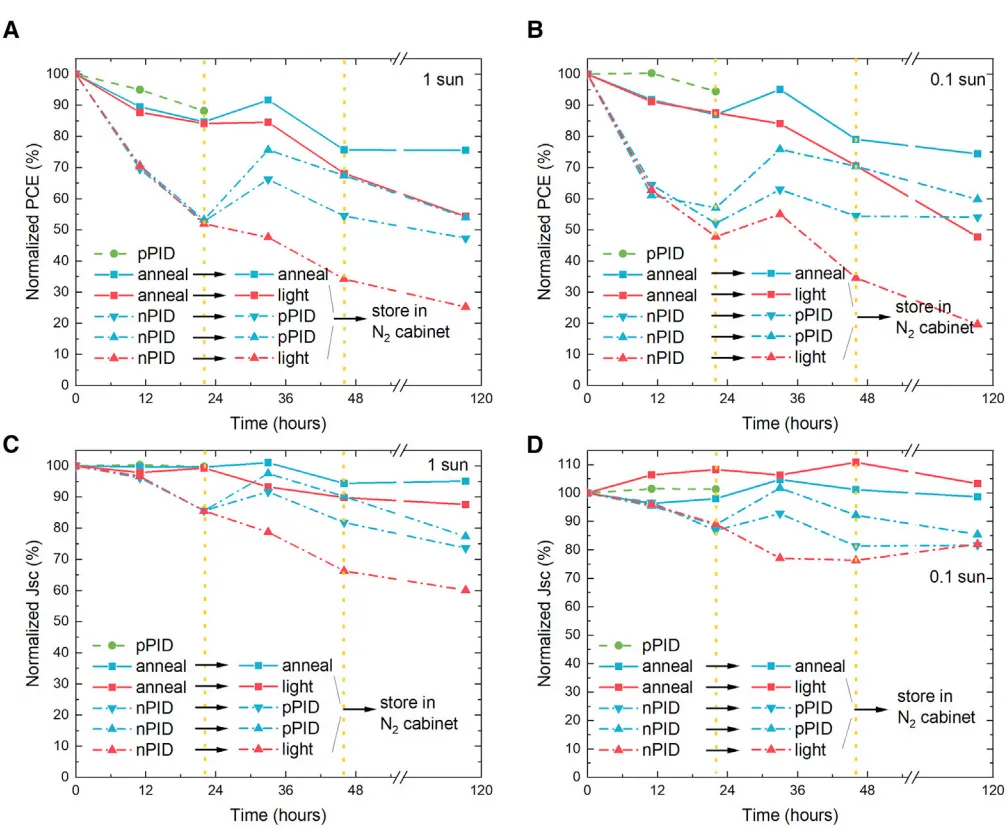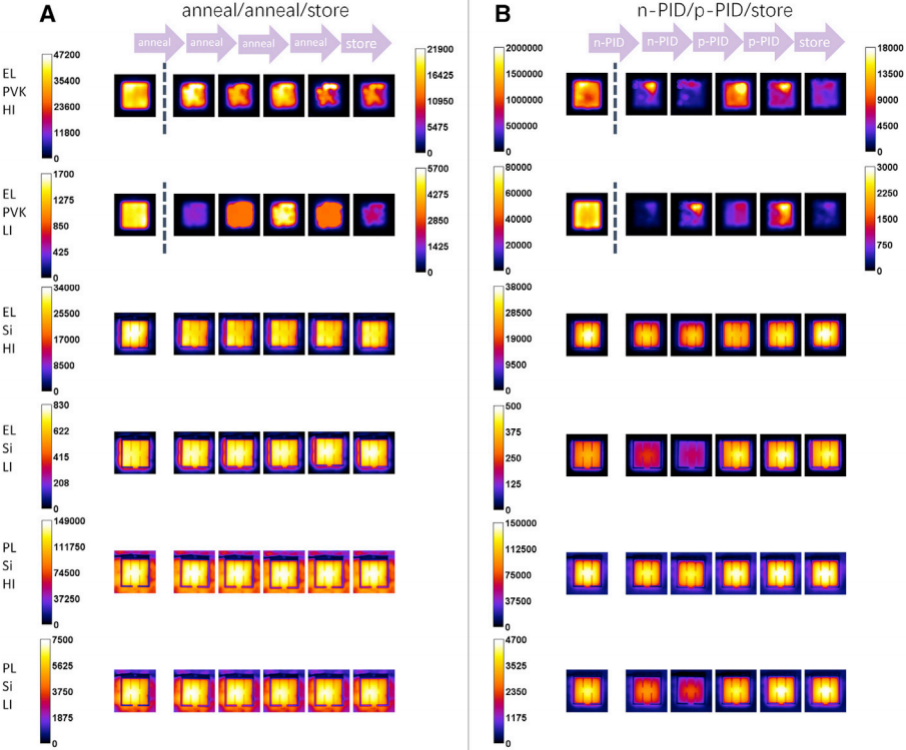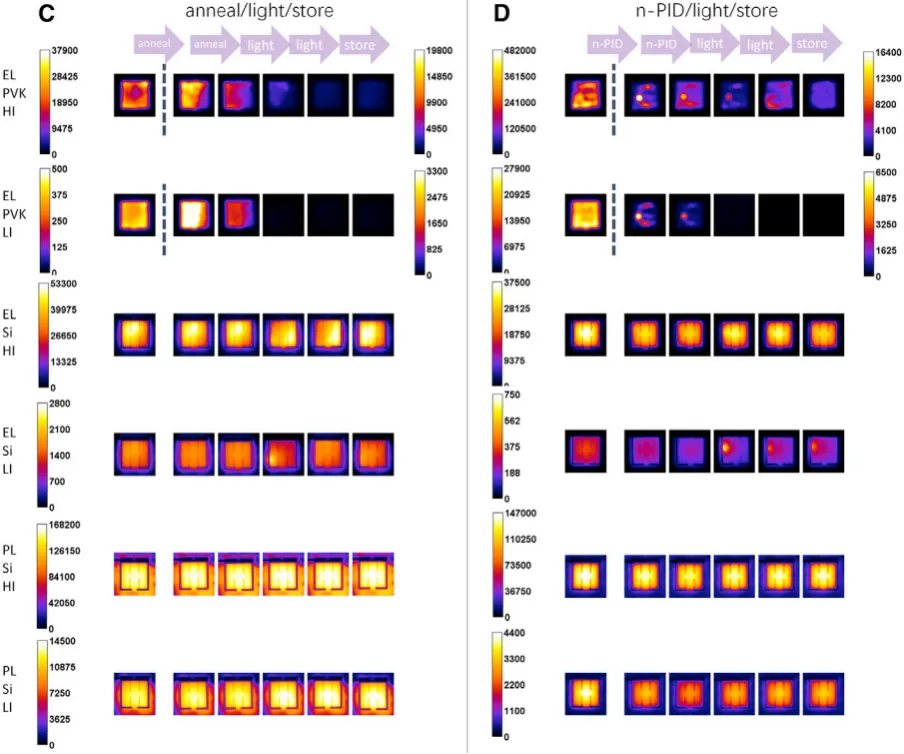
Quantum Efficiency Tester
PL/EL Integrated System
PV-Reflectumeter
3D Confocal Microscope
In-Line Four Point Probe Tester
Four Point Probe Tester
In-Line Thin Film Thickness Tester
Raman Spectrometer
FTIR Spectrometer
Spectrophotometer
Automatic Spectroscopic Ellipsometer
Contact Resistance Tester
Ultra depth of field 3D microscope
Auto Visual Tester
VMM PV Vision Measuring Machine
Solar Cell Horizontal Tensile Tester
Steady State Solar Simulator for Solar Cell
Solar Cell UV Aging Test Chamber
Solar Cell Comprehensive Tensile Tester
Visual Inspection Tester
Wet Leakage Current Tester
PV Module EL Tester
PV Module UV Preconditioning Chamber
Steady State Solar Simulator for PV Module
Current Continuous Monitor
Potential Induced Degradation Test
Bypass Diode Tester
LeTID Test System
Reverse Current Overload Tester
Impulse Voltage Tester
Hipot Insulation Tester
Ground Continuity Tester
Hipot Insulation Ground Tester
Damp Heat Test Chamber
Humidity Freeze Test
Thermal Cycle Test Chamber
Dynamic Mechanical Load Tester
Static Mechanical Load Tester
Hail Impact Tester
Robustness of Termination Tester
Module Breakage Tester
Cut Susceptibility Tester
Peel Shear Strength Tester
Universal Testing Machine (Single-arm)
Universal Testing Machine (Double-arm)
Glass Transmittance Tester
Acetic Acid Test Chamber
EVA Degree of Crosslinking Test System
Junction Box Comprehensive Tester
Drop ball tester
Semi-automatic scanning four-probe tester
Stylus Profilometer
Maximum Power Point Tracker
Perovskite Glass Transmittance Tester
Perovskite P1 Laser Scribing Multifunctional Testing Machine
Perovskite Online PL Tester
Perovskite Online Sheet Resistance Tester
Online Perovskite Film Thickness Tester
Perovskite Process Inspection Workstation
Portable IV Curve Tester
Portable EL Tester
Portable Thermal Imaging Tester
Solar Module Multi-Channel Testing System
PV Inverter Power Quality Tester
Drone EL Tester
IV Tester
IVEL Cell Sorting Machine
Potential Induced Degradation (PID) Analysis in Perovskite Solar Cells
Date : 2024-08-21Views : 330
Although great progress has been made in the performance of perovskite solar cells, their potential induced degradation (PID) has not been fully studied. By simulating the environment of perovskite solar cells at 60°C and applying a 1000 V bias voltage for 1 day, it was found that the photoelectric conversion efficiency lost 50%. This is because the diffusion of perovskite elements causes the cell structure to be destroyed, thus inducing potential induced degradation. Potential Induced Degradation Tester from Millennial Solar evaluates whether the electrical performance of the component meets the requirements by testing the PID attenuation of perovskite cell components in harsh environments for a long time.

Research and analysis of PCE of perovskite cells after PID test
Current studies have shown that after the MQT 21PID test in the IEC61215:2021 standard, the photoelectric conversion efficiency of perovskite solar cells loses about 50%. This is because some elements including Br, I, Pb and Cs diffuse into other layers after the test, and the structure of the perovskite cell is destroyed, resulting in its optical and electrical degradation. This problem has attracted the attention of photovoltaic manufacturers. The initial photoelectric conversion efficiency (PCE) of encapsulated perovskite solar cells ranges from 21.8% to 26.6%. The following specific test steps are used to evaluate the PID effect and its recovery method.

Perovskite structure and element diffusion diagram under PID test device
The test steps and details are shown in the following diagram:


Specific test steps:
Control group: in nitrogen cabinet, <35%RH
p-PID: +1,000 V bias, in a test chamber at 60°C, <20%RH.
n-PID: -1,000 V bias, in a test chamber at 60°C, <20%RH.
Annealing: Annealing in a test chamber at 60°C, <20%RH, no voltage bias.
Light soaking: Sun intensity light transmission, in an open circuit environment at room temperature of 22°C, no voltage bias.
Multi-dimensional electrical performance parameter analysis
Control group: The control sample (no bias) retained 84% of the initial PCE at the same temperature.
p-PID: +1000V bias, 22 hours at 60°C, no PID effect on the tandem module.
n-PID: -1000V bias, 22 hours at 60°C, PCE dropped sharply to 53% of the initial value.


Normalized IV parameter trend
The trend of the parameters PCE, short-circuit current density (Jsd), open-circuit voltage (Vod), and FF are normalized to the initial state. As we can see in the figure above, the sample shows a change similar to that of the sample that was only annealed, indicating that the +1,000V bias does not cause PID in the series module.
From Figure A, the trend of the PCE of the perovskite cell under the n-PID test. In contrast, the sample kept without voltage bias at the same temperature degraded much more slowly, retaining about 84% of the initial PE.
The samples were divided into two groups to test whether PID can be restored by subsequent test steps (p-PID or light soaking). The samples treated with p-PID (4 and 5) recovered faster than the control group, and their PCE increased from ~52% to >65% within the first 11 hours. But during the extended p-PID period, their PCE decreased, and the degradation rate was similar to that of the control sample after annealing. This shows that the n-PID effect can be partially recovered by the p-PID test. However, the p-PID test under the annealing environment may also cause thermal degradation. In the second group, we found that light soaking cannot restore the n-PID effect of the studied modules. Instead, it leads to further degradation.
As can be seen from Figures C, E, G, the PID effect on PCE is mainly caused by FF degradation, especially in the first 11 hours of n-PID testing, followed by the loss of Voc and Jsc. The trend of low-light (0.1 sun) IV performance shown in Figures B, D, F, H is similar to that under 1 sun conditions, with the PCE degradation of samples affected by n-PID at 0.1 sun higher than that at 1 sun. Since IV performance is more sensitive to shunt resistance at low light intensity than at high light intensity, this difference indicates that n-PID induces shunting.
Analysis of the slopes of series resistance and parallel resistance in different samples
Since the change of FF contributes most to the change of PCE, it is necessary to analyze its main components, such as the series resistance Rs and parallel resistance Rsh of the series module.


Qualitative analysis of the correlation slopes between Rs and Rsh in different samples
When the series resistance Rs increases, it will cause the IV curve to become flatter near the short-circuit current (Jsc). After the PID test, the slope of the IV curve near Jsc decreases, and it can be inferred that Rs has increased. n-PID testing affects series resistance by introducing defects or increasing interface resistance.
As Rsh decreases, leakage channels become more significant, causing current to flow through these channels at lower voltages, thereby reducing FF. The changes in the IV curve after the PID test are more sensitive to the performance degradation caused by the reduction of Rsh.
EL and PL


EL and PL images
We measured the EL and PL images of the samples after each test step. The results showed that the initial EL signal of the perovskite was 1-2 orders of magnitude higher than the EL signal after the PID test, and higher than the EL signal of the silicon subcell, which indicates that PID can cause non-radiative recombination to reduce the EL of the perovskite.
Based on the potential PID mechanism in perovskite cells, one improvement strategy is to use a non-encapsulated module structure. The cell is surrounded by an inert atmosphere and has no direct contact with the glass. Therefore, the potential bias falls almost entirely on the interface between the glass and the inert atmosphere. The ion migration that causes module degradation in the PID test is blocked by the inert atmosphere. However, encapsulants can provide mechanical support, optical coupling, electrical isolation, and environmental protection, so it is also important to study the PID effect in the module structure with encapsulants. For modules using encapsulants, a potential research direction in the future is to introduce a barrier material.
In summary, introducing a barrier or structure to prevent elements from diffusing out of the perovskite layer is a strategy to mitigate the PID effect. In addition, further study of the mechanism of the PID effect and development of new encapsulation materials and processes are needed to improve the PID resistance of perovskite modules.
Potential Induced Degradation Tester

E-mail: market@millennialsolar.com
Potential Induced Degradation Tester ME-PV-PID simulates the PID attenuation of perovskite solar cells in harsh environments (high temperature, high humidity, and high salinity coastal areas) for a long time to evaluate whether the electrical performance of the components meets the requirements. Potential Induced Degradation Tester for photovoltaic components developed according to IEC61215:2021 standard.
·Evaluate the ability of modules to withstand system bias
·Test the ability of modules to withstand various stresses such as system voltage, temperature, and humidity
·Forward and reverse switching DC power supply: voltage range (-2500~2500V)
In the perovskite PID test, it was observed that the perovskite cell degraded due to the diffusion of elements. Millennial Solar Potential Induced Degradation Tester simulates the PID attenuation of perovskite solar cells in harsh environments (high temperature, high humidity, and high salinity coastal areas) for a long time to evaluate whether the electrical performance of modules meets the requirements.

































































